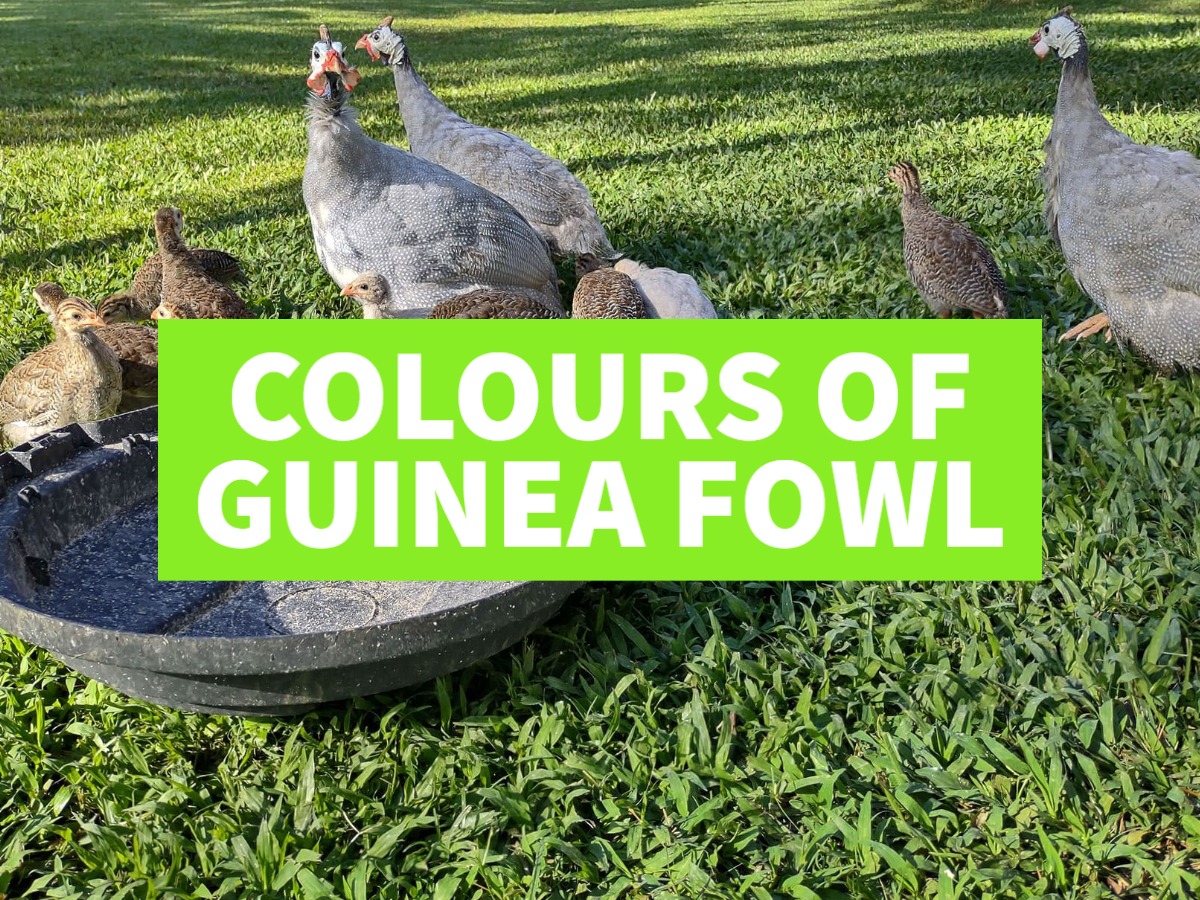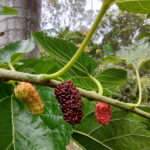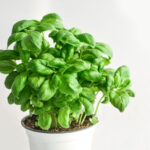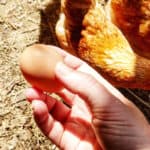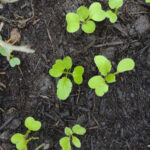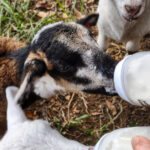This post may contain affiliate links.
Domestic Guinea Fowl come in many many colours, including Pearl ( dark grey, wild type), White, Peach, Buff Dundotte, Cinnamon, Copper, Coral, Royal Purple, Porcelain, Slate, Chocolate, Violet or Mulberry, Lavender (also common, light grey) and Coral Blue. In addition almost any type can be pied, pied birds have white patches.
Guinea fowl also have some blue red and white markings around their faces and necks. You will need a guinea fowl colour chart to identify colours with any accuracy, there are dozens of colours found in guinea fowl plumage.

Guinea Fowl
Guinea Fowl are noisy comical birds native to Africa, but are kept as domestic poultry, for meat and for eggs in Australia, Europe, The Americas and Asia. They are birds of the family Numididae (Numida Linnaeus) in the order Galliformes and are among the oldest of the gallinaceous birds. Their quirky antics and striking plumage endeers them to many poultry enthusiasts, as does their habit of controlling, or eradicating tics.
Guinea fowl meat is good to eat and is widely available in France, the UK and other parts of Europe. Guinea fowl eggs are also good to eat and are slightly smaller than a chicken egg, pointed at one end, and very hard shelled.

Some people hate guinea fowl because of their loud calls and tendency to wander beyond boundaries, particularly onto roads.
They are said to be good for controlling the Lyme Disease-bearing deer ticks and paralysis tick. They are also known to eat small bees and wasps (yellow jackets). They are a great bird to keep if you have a tick problem and can really decimate a tick infestation on your land.
Do Guinea Fowl Lay Eggs?

Guinea fowl lay eggs daily, in warmer climates (such as ours in the tropics) they can lay all year, but most guinea fowl keepers find they stop laying in winter.
Female guineas start to lay around 8 months old, but if that date falls in winter, they will often start laying later. You don’t often see guinea fowl sold at point of lay as you do with chickens.

Guineas often lay their eggs in grass and under bushes, I’ve never known a guinea fowl to use a nesting box. They are communal nesters and one female will sit on a clutch of 20-30 eggs. The incubation period is from 25 to 28 days. On hatching the baby guinea fowl, which are called keets not chicks, must be kept warm until their down is replaced by feathers.
What colour are guinea fowl eggs? Guinea fowl eggs are typically light beige and don’t usually have spots or other markings. Their pointed end makes them quite easy to identify from chicken eggs.

If you hatch keets their colour when young isn’t a good indicator of the colour of their adult plumage. As they grow up their colours do change. Brown keets are likely to be pearl, grey coloured keets could be lavender, but there is a lot of variation and patterns in the down and new feathers of keets.
The sripes on the keets heads are a good way of predicting what colour an adult guinea fowl will be, but it takes an expert eye to identify them. You also won’t be able to sex guinea fowl keets until they start making their adult calls.
Can You Keep Guinea Fowl in a Coop?
You can keep guinea fowl in a large coop or allow them to free range, but once they’ve tasted freedom they may never return to the coop again. They have a preference for roosting on rooftops and in trees rather than in a safe, warm, coop.
If you live in a cold climate, where winter temperatures drop below freezing, this can be a problem. Guineas roosting in trees tend to get frostbite in their feet and toes. These birds come from Africa, I personally wouldn’t keep them in a cold climate.
Your coop must have bars, as high as possible for your guinea fowl to roost on. Incidentally, the plural of guinea fowl may be guinea fowls or guinea fowl, both are correct according to the dictionary.
Will Free Range Guinea Fowl Destroy Garden Beds?
Guinea fowl aren’t as destructive as chickens and my own flock has caused no damage to my fruit, vegetables, and herbs. I have heard from other guinea fowl keepers that their birds have damaged food plants. Perhaps they don’t have the abundant space and food that we have.
As our garden beds are chicken proofed, it shouldn’t be a problem.
How Big Are Guinea Fowl?
Despite the dictionary above describing guinea fowl as “large” they’re actually smaller than a typical chicken, they’re not big birds at all. Jumbo guinea fowl are usually kept for meat, mostly in France.
Can You Keep Guinea Fowl in a Suburban Back Yard?
Guinea fowl are very noisy birds that do not respect boundaries and fly pretty well. As such they are not a great backyard pet if you have neighbours. It’s best to keep guinea fowl on acreage as we do on our 5 acre farm.
You can clip the flight feathers on one wing to stop they flying well, but these do grow back and you have to do it regularly. Good luck catching them.
How Many Guinea Fowl Should You Keep?
I would suggest keeping a flock of at least 8 guinea fowl. These birds do not do well without their flock and single males or females may well depart looking for a mate.
A group of guinea fowl is called a rasp or a flock, although another collective noun applied to guinea fowl by son, a confusion, seems pretty accurate.
Guinea fowl have a tendency to be taken by predators, killed on roads, or to just fly away, so you should keep hatching more to keep the numbers in your flock high enough.
Where Can You Buy Guinea Fowl
You can buy feretile guinea fowl eggs to hatch and have them delivered by post, you can buy chicks or keets, and sometimes adult guinea fowl. However, for any birds, young or old, you should keep them in their coop for at least a month or they are very likely to never return.
If you need to find guinea fowl in Far North Queensland Australia (near Cairns, Port Douglas, Tablelands, Mossman etc.) Reach out to us at [email protected], we may be able to help you out with hatching eggs, keets or young birds in peach, chocolate, pearl and lavender, some pied.
As far as we know there are no guinea fowl in Australia but they can be bought in the United States.
Can You Keep Guinea Fowl With Chickens?
Yes you can keep guinea fowl and chickens together but some male guinea fowl, particularly if they’re protecting their mate or their young, can be very aggressive towards chickens. As long as you have plenty of space you should be fine.
